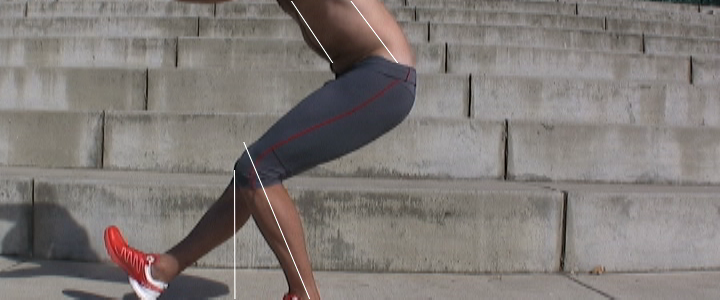Better Understanding the Mystery of the Injured Runner, Part I
The injured runner and running injuries – what a conundrum! A while back I had become increasingly frustrated by what seemed, a lack of science-based treatment plans for the injured runner. There also seemed a void on how to systematically return runners to sport, and prevent injuries. Running magazines, blogs and books seemed to exacerbate the confusion, by presenting the flavor-of-the-day solutions, leading readers on a zig-zag course based on quick fixes and sweeping technique changes.
In my frustration, I started researching programs that offered science-based solutions to assessing, evaluating and returning runners to sport, as well as strategies to prevent injuries. As a result, I decided to commit to a six month fellowship on Advanced Lower Extremity Biomechanics with Dr. Chris Powers, at his USC-affiliated Movement Performance Institute in Los Angeles.
In short, Dr. Powers had his ah-ha, research-changing moment when the MRI became dynamic in its capability, and able to capture movement. Powers captured the movement of a single leg squat, and proved, in very simple terms, that hip stability dictates the hip, knee, toe alignment. This turned physical therapy regarding treatment of knee issues upside down. Up to this point much of the treatment had been focused on strengthening the muscles directly surrounding the knee in order to improve knee alignment relative to the hip and toe.
Fifteen years of research, focused on better defining the hip-lower extremity relationship, later, Dr. Powers has derived a research proven assessment, dynamic (video) evaluation, treatment and return to sport protocol.
Powers’ systematic, progressive protocol contrasts with the prevalent treatment which seems often based on a shot-gun, guess-work approach in attempting to solve the mystery of the injured runner.
Recently, now a few years after completing the Power’s fellowship, I attended a research symposium, entitled the Science of Running. This was a unique opportunity to hear three of the leading researchers and clinicians present on normal and abnormal running biomechanics, assessment, evaluation, and treatment of the injured runner. While all three agreed on most of the points presented, with slight degrees of variation in assessment and evaluation, they were oceans apart in their treatment strategies for the injured runner. Hmmmmm, Interesting.
The presenters included…
Dr. Irene Davis, on faculty at Harvard Medical School and Director of the Spaulding National Running Center, who treats runners by transitioning them to a forefoot strike, in minimalist shoes or barefoot.
Dr. Brian Heiderscheit, Professor at the University of Wisconsin, Madison, and Director of the Runner’s Clinic at UW Sports Medicine Center and Director of Badger Athletic Performance Research, treats injured runners through cadence manipulation, shortened stride and moderate heel strike.
Dr. Chris Powers, Co-Director of the Musculoskeletal Biomechanics Lab at USC, and Director of the Movement Performance Institute, treats with improved hip activation/recruitment and stability with a heel strike pattern.
This was a unique opportunity to glean from three leading researchers, who implement what they have proven in their research in to practice with patience in their clinics. So these are research proven, patient tested protocols and strategies.
I was motivated and interested to attend the symposium to hear and understand all sides of the foot-strike story. We all know there is not a one-size fits all, technique. But I wanted to deepen and widen my understanding of the underlying issues in order to help runners, run pain free, and avoid injury.
This post will be the first in a series, sharing the 30,000 foot view (avoiding too much detail to bore you to delirium) of the Science of Running symposium.
Thanks for reading, and please feel free to contact me with questions, Julie Young





